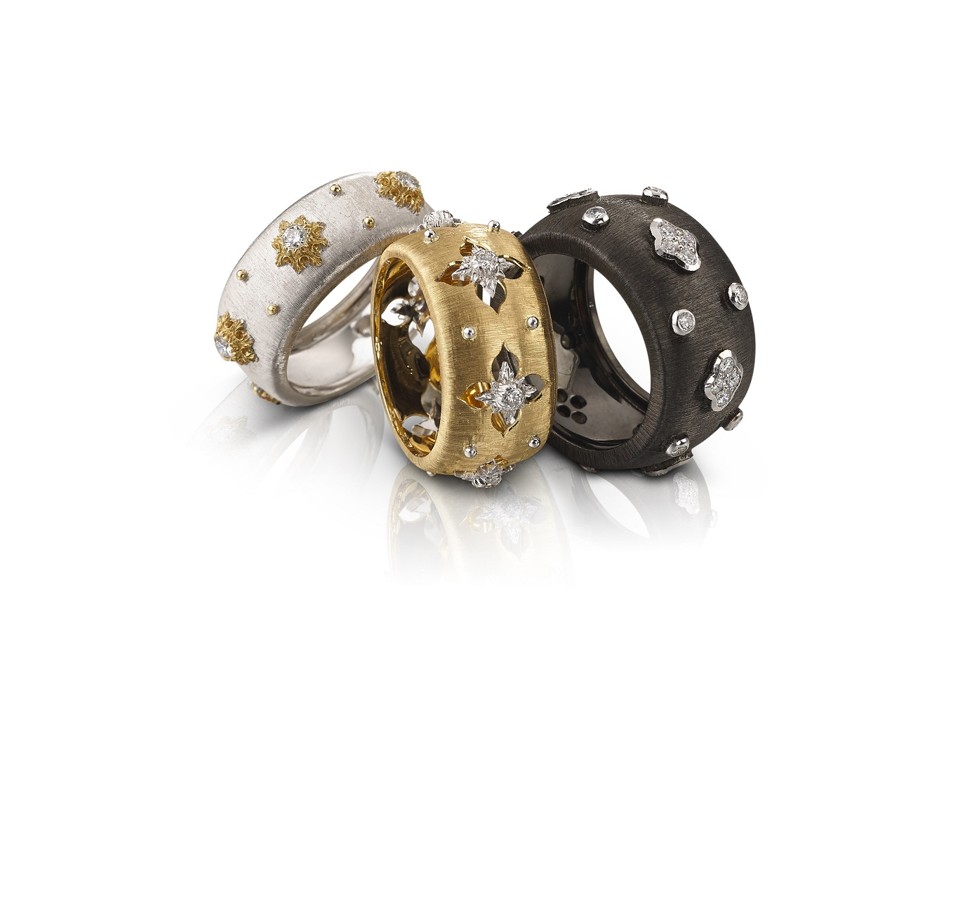Buccellati specialises in engraving techniques to create special effects for its jewellery

No other brand quite embraces Italian refinement like Buccellati does. Founded in 1919 in Milan by Mario Buccellati, who earned the nickname “The Prince of Goldsmiths”, the brand is known for its commitment to excellence. Since the opening of its first boutique, it has expanded its presence with stores in major cities around the world, including Dubai, New York, Paris, London, Beverly Hills, Beijing, Shanghai, Tokyo, Seoul, and Hong Kong.
Buccellati first introduced its exclusive Italian designs to the Hong Kong market in 1970, when it opened its first store. This year, the brand continued its commitment to Asia’s world city with a new store, which opened in Harbour City, one of the city’s busiest shopping hubs, last month.
The secret of the brand’s popularity and longevity is its focus on heritage, craftsmanship and passion.
Take for example, its work with gold, which has been one of the foundations of Buccellati since the very beginning. Mario Buccellati developed his understanding of goldsmithing during his apprenticeship at Beltrami & Besnati, a famed jeweller and goldsmith company. Since then, Buccellati’s designs have consistently focused on highlighting traditional Italian goldsmithing techniques that have roots in the Italian Renaissance, a time when refinement and beauty were at their peak.
One has to look no further than the brand’s iconic Macri collection to see how its heritage and passion for craftsmanship have been translated into real life.
The Macri collection features the brand’s signature Rigato engraving technique, where parallel lines are engraved into the surface of a precious metal using a sharp engraving tool called a burin. Using a burin is no small feat, as it demands an enormous amount of deftness as well as talent; the exact angle must be used when making a cut in the metal, as going off by a single degree could ruin the work.
However, when successful, the end effect is a surface that mimics a textile look that also effortlessly catches the light to show off a luxurious sheen.
Another traditional technique that Buccellati masterfully uses to great effect is the openwork technique, where a lace-like design is created. The best example is the cuff bracelet from the Dream Bracelets Collection, where the delicate patterns made of lace-like flowers are laid on a white gold cuff. After the diamonds are set, a decorated bezel is set around the stones to keep them in place as well as to add another layer of decoration and finesse to the cuff.
Other time-honoured engraving methods used by the luxury brand include Telato, where lines are finely crosshatched to create a linen-like visual effect; Segrinato, where tiny overlapping lines are etched to create a soft look; Ornato, a complicated decoration technique used to recreate objects found in nature; and Modellato, where designs are delicately chiselled to create a three-dimensional miniature sculpture. The Modellato technique is evidenced in the Eternelle rings. The rings, named Eternelle to highlight their uninterrupted design that takes the shape of delicate open-worked lace, use Modellato engraving on the borders.
These are just a few of the methods and techniques the brand expertly uses to produce a variety of designs. Each method requires hours and hours of dedication and patience. Depending on the desired pattern or effect, hours could turn into months. Case in point is the brand’s honeycomb pattern, which gives jewellery pieces a tulle-like effect, and requires a month for artisans to carefully shape each cell. Rare colourful stones are also used to give an extra layer of depth to the jewellery pieces – and a lively sparkle that promises Italian elegance and glamour.
It is no surprise that the brand has been favoured by members of royalty from Italy, Spain and Egypt. Even the great cardinals of Rome and other members from the upper echelons of society can be counted among the brand’s clientele.
Want more stories like this? Sign up here. Follow STYLE on Facebook, Instagram and Twitter

The Italian fine jeweller uses engraving techniques such as Rigato, Telato and Modellato to create dazzling effects in its products





